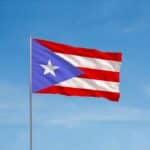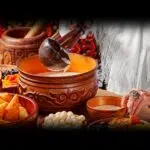On Emancipation Day in Puerto Rico, which takes place on March 22, Puerto Ricans celebrate the day their national assembly abolished slavery in the country, even as the island was still a Spanish colony. Puerto Rico made the decision over a decade after the U.S. did, but you can’t tell while looking at the country’s celebrations. Puerto Ricans embrace the ‘Día de la Abolición de Esclavitud’ with gusto — singing, dancing, and huge feasts!
History of Emancipation Day (Puerto Rico)
Like most colonized nations, Puerto Rico was once involved in the slave trade. Its history of slavery stretches back decades to when Spaniards colonized the country. When the Europeans first landed on the island, they didn’t know the diseases they brought with them would decimate the native population, leaving the colonizers with a severe labor shortage. That plus years of mistreatment by Spain meant the number of Indigenous peoples dwindled. And because Puerto Rico was such an essential part of the Spanish empire — its gold mines were particularly profitable — they had to find an alternative.This is how enslaved African people came to Puerto Rico in the 16th century. The gold had been extracted, and the mines rendered useless, so sugar was the new treasure. Sugar plantations sprung up all over the island, and enslaved people went to work cultivating it. Eventually, however, the world woke up to the reality that slavery was inhumane and unlawful and began to revolt against the practice. More colonies rebelled and gained their freedom. The global antislavery movement and growing liberalism among the Puerto Ricans, along with the multiple slave revolts and uprisings that sporadically occurred in the nation, led to the abolishment of slavery in 1873. This was a conditional ruling, as enslaved people had to buy back their freedom while working for their former employers for an additional three years. This law was far from perfect and by no means fair, but it signaled a new era for the island’s enslaved.Today, Puerto Rico’s population is a racial melting pot of the many cultures that have settled there. The years of cultural and racial immigration have left a mark, creating a community that joyously celebrates the end of slavery.
Emancipation Day (Puerto Rico) timeline
Spain allows its people to bring 12 enslaved people each into Puerto Rico, beginning the island’s slave trade.
Around 10 years after the slave trade was introduced to Puerto Rico, dozens of enslaved people fight against their colonists in a brief revolt that sees the few survivors running off to live alongside the Indigenous people.
Enslaved Marcos Xiorro plans a slave revolt that fails after a whistleblower informs his owner.
The Spanish National Assembly conditionally bans slavery.
Emancipation Day (Puerto Rico) FAQs
How is Emancipation Day celebrated in Puerto Rico?
Emancipation Day celebrations in Puerto Rico include dancing, often to Plena and Bomba music, singing, and dining on traditional cuisine.
Is Juneteenth celebrated in Puerto Rico?
While more and more people are gaining awareness of Juneteenth and its significance, it is not a national holiday in Puerto Rico.
How long did slavery last in Puerto Rico?
Slavery existed for around 350 years after it was first introduced to the island in the 16th century.
Emancipation Day (Puerto Rico) Activities
-
Discover traditional Puerto Rican cuisine
Go on a culinary tour of the country. Sample Puerto Rican dishes, like coquito, pasteles, empanadillas, and tostones. If you’re feeling particularly chef-life, head to the kitchen to experiment with a Puerto Rican dish of your choice.
-
Throw a Puerto Rican–style party
Do as the Puerto Ricans do and celebrate the day with a colorful, festive party. Invite all your favorite people for a meal filled with Puerto Rican cuisine, music, and culture.
-
Learn about slavery in Puerto Rico
Cap your celebrations with some knowledge about the nation’s history of slavery and its abolishment. Read up on the effects of the 1873 law and how it impacted the country.
5 Facts About Emancipation Day And Puerto Rico
-
The first European in Puerto Rico
In November 1493, a very famous explorer stepped foot on the island of Puerto Rico — Christopher Columbus.
-
A celebration of note
Trinidad and Tobago declared a national holiday on August 1, 1985, to commemorate the abolishment of slavery in their country, becoming the first independent country to do so.
-
Puerto Rico’s 1873 law helped many
Historians have pegged the number of enslaved people freed by Puerto Rico’s 1873 law at around 29,335, making up at least 5% of the island’s population at the time.
-
African roots
Many sources put African ancestry at 60% in Puerto Rico, and a vast majority of these are Afro-Puerto Rican, which means they have been in the country for generations.
-
Strong African cultural influence
Puerto Rican dance forms, like Bomba or Plena, originated in Africa, their food has distinctive African flavors, and their music also incorporates traditional African sounds.
Why We Love Emancipation Day (Puerto Rico)
-
It highlights the struggle for freedom
Every Puerto Rican carries echoes of their ancestors’ oppressed past. Celebrating Emancipation Day honors the sacrifice of every person who raised their voice against slavery. The day also acknowledges the complicated law that followed the abolishment of slavery and the process this freedom took.
-
It recognizes the efforts made to end slavery
Marcos Xiorro, José Julián Acosta, and Ramón Emeterio Betances are just some of the people who fought against slavery in Puerto Rico. These celebrations are a reminder of their resilience and a source of constant inspiration for Puerto Ricans.
-
It celebrates the island’s population
A celebration like this only highlights Puerto Rico as a melting pot of cultures because most of its population is European, African, Asian, or a mix. It’s a reminder to appreciate all the influences that have shaped the nation into what it is today.
Emancipation Day (Puerto Rico) dates
| Year | Date | Day |
|---|---|---|
| 2023 | March 22 | Wednesday |
| 2024 | March 22 | Friday |
| 2025 | March 22 | Saturday |
| 2026 | March 22 | Sunday |
| 2027 | March 22 | Monday |




















